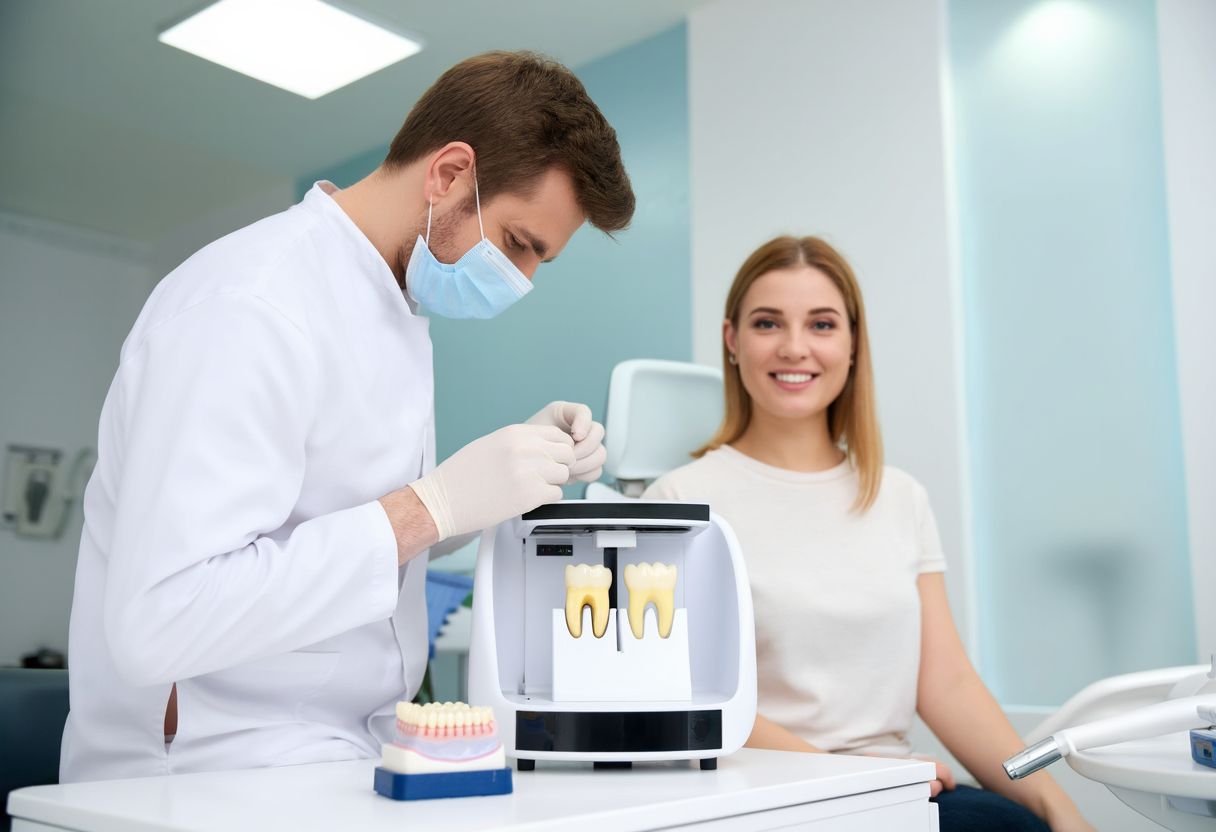Are 3D Printed Dental Implants the Future of Dental Care?
With advancements in technology, 3D Printed Dental Implants emerge as a groundbreaking solution in dental care. This article examines their innovative production process, the cost-effectiveness benefits, enhanced patient experiences, and the transformative impact on the dental industry in the years to come.
The Innovative Production Process of 3D Printed Dental Implants
The production process of 3D Printed Dental Implants is a marvel of modern engineering, showcasing the intersection of technology and healthcare. Unlike conventional implants that require extensive manual labor, 3D Printed Dental Implants utilize a camera-guided optimization process, ensuring high precision. Initially, a detailed digital scan of the patient's oral cavity is taken, which is then used to create a custom implant using specialized software and advanced printers. This meticulous approach reduces the risk of human error and increases the likelihood of a successful implant installation. Furthermore, the automation of the production process allows for faster turnaround times, ensuring that patients do not experience unnecessary delays in receiving their dental care. Essentially, the manufacturing timeline for 3D Printed Dental Implants is significantly shorter than traditional methods, yielding notable improvements in patient satisfaction and clinical outcomes.
Cost-Effectiveness and Accessibility of 3D Printed Dental Implants
A key advantage of 3D Printed Dental Implants is their cost-effectiveness, which plays a crucial role in making advanced dental care accessible to a wider audience. The reduced labor costs associated with automated manufacturing processes enable dental professionals to offer these innovative solutions at competitive prices. Additionally, the material efficiency achieved through 3D printing minimizes waste, further driving down costs. This affordability can lead to an increased number of patients opting for dental implants, which translates into better overall oral health for communities. Moreover, the accessibility of 3D Printed Dental Implants means that underserved populations may finally benefit from advanced dental technologies that were previously out of reach. As the dental field continues to evolve, the drive for lower-cost solutions will undoubtedly influence future innovations and practices.
Enhanced Patient Experiences with 3D Printed Dental Implants
The enhancement of patient experience in dental treatment is becoming increasingly evident with the implementation of 3D Printed Dental Implants. From the initial diagnostic phase to the final installation, patients are treated to an elevated standard of care. The ability to customize implants not only leads to better fit and comfort but also fosters a sense of trust between the patient and dental staff. Patients often report less discomfort and quicker recovery times due to the precision of these implants. Furthermore, the transparency of the design and production process empowers patients with knowledge about their treatment, allowing them to make informed decisions. Enhanced communication throughout the journey ensures that patients feel valued and cared for, contributing to a more positive overall experience. In this aspect, 3D Printed Dental Implants hold the promise of transforming mundane dental visits into personalized care journeys.
The Transformative Impact of 3D Printed Dental Implants on the Industry
The transformative impact of 3D Printed Dental Implants on the dental industry cannot be overstated. As practitioners increasingly embrace this technology, the standards for care evolve, pushing the boundaries of what is possible in dental treatment. Moreover, this shift could potentially lead to widespread changes in curricula at dental schools, integrating advanced technology training to prepare future professionals for a tech-driven landscape. The adoption of 3D printing may also spur innovations in other areas of dentistry, such as orthodontics and restorative practices, leading to a more integrated approach to patient care. As an industry, dental care must adapt to these advancements or risk being left behind. The continued growth of 3D Printed Dental Implants sets a clear precedent for how technology can redefine not just procedures, but the entire dental experience for both patients and providers.
Future Directions for 3D Printed Dental Implants
As we look forward, the future directions for 3D Printed Dental Implants are filled with exciting possibilities. Ongoing advancements in materials science, such as further development of bioactive materials, may enhance the effectiveness of implants in promoting healing and integration within bone structures. Furthermore, as technologies progress, the potential integration of augmented reality and virtual reality into dental practices may provide patients with immersive experiences that assist in treatment planning and education. Research into the longevity and performance of 3D Printed Dental Implants continues to expand, shedding light on ways to maximize their efficacy. With these advancements on the horizon, it is safe to say that 3D Printed Dental Implants will play a vital role in shaping the future of dental care, ensuring that high-quality, personalized solutions remain at the forefront of the industry.
